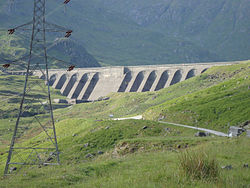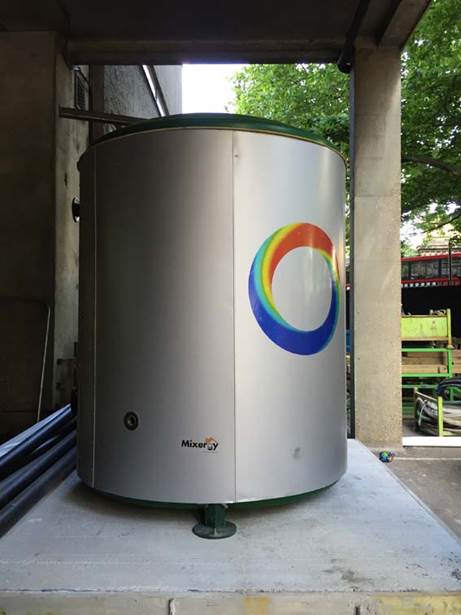Demand Side Response Benefits
Businesses can save money if they are prepared to be flexible in the timing of their demand for electricity and participate in load balancing of the Grid: shifting their use of electricity away from times of peak demand.
Demand Side Response
The cost of generating electricity – and the carbon intensity – varies throughout the day.
The generating companies have to meet the cost of guaranteeing the supply of electricity at times of peak demand – or the lights will go out.
Heavy investment is needed to be able to meet peak demand, and revenue costs are incurred to bring on extra generating capacity to cover peak demand.
At times of slack demand more electricity is being generated than can be used: you cannot turn down the wick on a nuclear power station at night and turn it up by day.
Wind farms may produce extra electricity if the wind blows strongly at night when demand is low.
PV arrays may produce extra electricity on long summer weekend days when demand is low.
Supply Side Balancing

The generating companies are using techniques to smooth the supply curve such as "pumped hydro" where spare electricity at night is used to push water up hill into reservoirs and released to drive turbines by day to meet peak demand. However, few sites in Britain lend themselves to this way of balancing electricity supply.
The UK National Grid has established an "interconnect" with France, The Netherlands and Ireland: this allows the UK to buy electricity from neighbouring countries, or sell electricity when the UK has excess supply.
Demand Side Response

The generating companies are beginning to offer lower prices to customers who can be induced to increase their demand in response to lower prices when supply exceeds demand – and to delay their demand for electricity at times of peak demand: "demand response".
A key opportunity opens up for organisations which consume very large amounts of electricity to delay their demand away from on-peak times in favour of off-peak consumption by agreeing service use contracts directly with the National Grid. Those not in the big league can also get some of these benefits by working through a "Demand Side Response Aggregator" who parcels up a set of smaller contracts to give themselves enough scale to contract with the National Grid.
See video on Demand Side Response.
Internet of Things
An Aggregator needs be in direct touch with a large number of devices using bi-directional sensors and controls across the Internet. These devices in homes and businesses can then be quickly switched on or off at the right time, communicating through the Internet of Things.
This includes those using electric heating – including heat pumps – to heat large buildings, and those using electric cooling to transfer heat out of buildings in summer, especially if they are employing seasonal thermal storage to store surplus summer heat to the ground. They have an opportunity to exploit the thermal inertia of their buildings to store heat when electricity is cheaper and delay heating when the price of electricity is higher.
Dynamic Demand Response
The cost of generating electricity changes not only within the 24 hour cycle, but also changes from day-to-day and from summer-to-winter: photovoltaic generates most on long clear summer days and wind turbine generation depends on the weather. Modern computing power can measure the dynamic changes in costs and communicate this over the internet in terms of prices for successive time slots.
Automated Demand Response
Sophisticated control equipment is needed to analyse the data and to control the equipment that uses electricity to take advantage of the these price changes. It is also necessary to channel the controls through an "aggregator" who has a contract with the Grid in order to be paid for responding to signals from the Grid.

Demand Response Energy Storage – "DRES"
Demand Side Response links well with Energy Storage: it is easier to respond to changing prices from the grid if local energy storage is also available. Energy storage can take the form of local battery storage for electricity. It can also take the form of local heat storage capacity in large insulated water cylinders. If these local resources are available then a more sophisticated control mechanism can draw on local resources when the electricity price is high – and use cheaper electricity to top up local resources when the price is right.
Smart control of district energy
There is a big opportunity for exploiting Demand Response where smart control is employed in district energy schemes that are based on the electrification of heat using heat pumps to arrange heat transfer: the scale of operation opens up scale opportunities for "aggregators" to negotiate useful contracts with the Grid.
Bi-directional energy grids
Bi-directional energy grids "Smart Grids" are needed to provide electricity to power heat pumps – and to provide the feedback and control circuits to allow the heat pumps to be controlled and respond to signals from the Grid.
The following ideas are incorporated into the control systems needed to benefit from Demand Response contracts with "Aggregators":
- balancing energy demand by load shifting
- district heating design
- smart energy control system
- internet of energy
- distributed heat storage
- resolving mismatch between energy supply and demand
- the price of energy rises when demand is high and supply is low
- smart energy business and service models
- co-ordinating energy and information streams
- exploiting the thermal inertia of buildings to store heat
- advanced energy supply relies on suppliers and consumers reacting to price changes
- frequency response
- Demand Turn Down - Short Term Operating Reserve - STOR - operating margin - 'headroom'
- Demand Turn Up - 'negative reserve' or 'footroom'
- Demand Side Balancing Reserve - DSBR
- Triad system
- mismatch between supply of renewable energy and demand.
Balanced Energy Networks
An Innovate UK funded demonstration pioneered the electrification of heat, including the use of Demand Response, in the Balanced Energy Networks project in central London. ICAX partnered with Upside Energy to allow ICAX heat pumps to benefit from Demand Side Response.
We believe that the high temperature heat pumps at the BEN project were the first heat pumps in the world to be able to respond to full Demand Side Management.
Smart Hubs Project
UK Research and Innovation is providing £13m towards the exciting new £42m Smart Hubs Project which will demonstrate the Electrification of Heat and the Electrification of Transport at Shoreham-by-Sea in West Sussex. ICAX, a partner in the project, is supplying high temperature marine source heat pumps which will provide 2 MW of heat to a new fourth generation district heat network in Shoreham Harbour. Smart Hubs will incorporate a Virtual Power Plant to help balance the local smart grid.
See Low Carbon Heating See Low Carbon Cooling See Ground Source Energy

